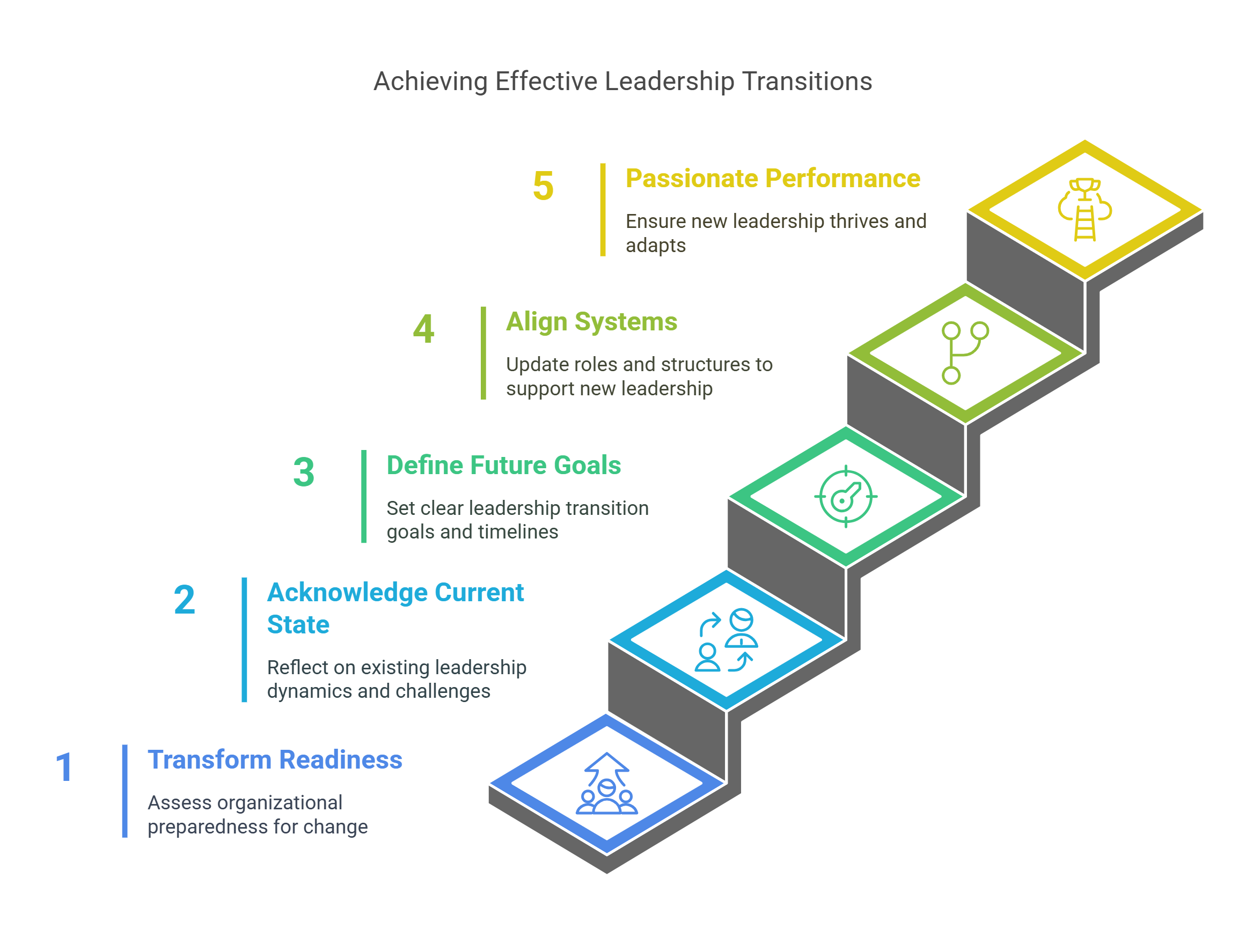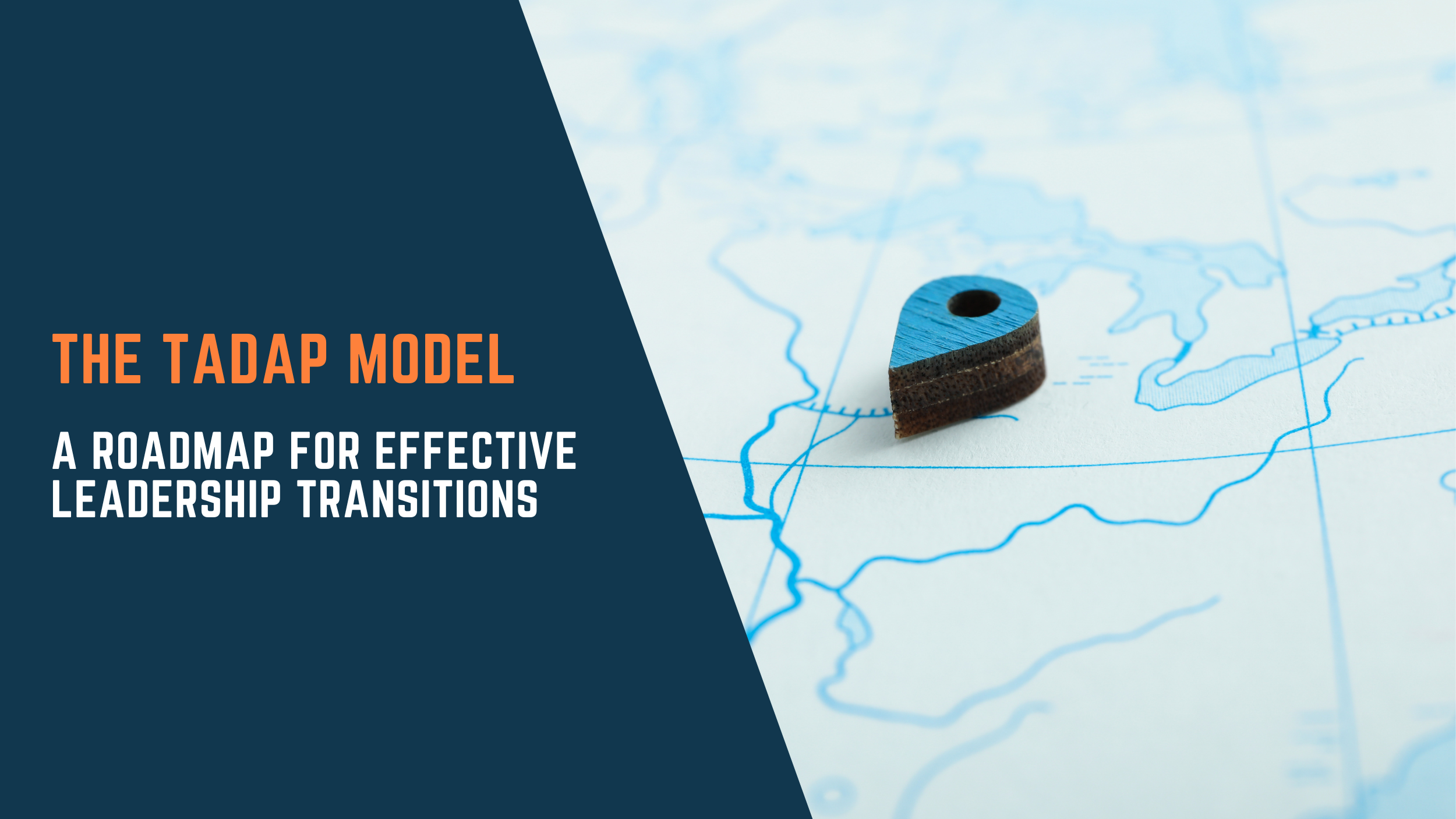Leadership transitions are among the most critical moments in any organization’s journey. Whether transitioning a CEO, restructuring leadership teams, or integrating the rising generation of family business leaders, the challenge lies in managing change effectively while maintaining stability. Dr. Jean Meeks-Koch’s TADAP Model offers a structured approach that transforms leadership transitions into opportunities for growth and synergy.
What is the TADAP Model?
Dr. Jean Meeks-Koch developed the TADAP Model through extensive research into the five major theories of organizational change. It provides a comprehensive framework for planning, executing, and sustaining change within an organization. TADAP stands for:
- Transform Readiness
- Acknowledge Your Current State
- Define Your Future
- Align Systems
- Passionate Performance
This structured methodology ensures that leadership transitions are handled systematically, balancing both the human and operational aspects of change.
How TADAP Facilitates Leadership Transitions
Leadership changes can be unsettling, but by following TADAP, organizations can navigate transitions with clarity and confidence. We look at the current system and what is currently happening amongst the individuals the systems they work with and all stakeholders.

1. Transform Readiness
Before any leadership shift, organizations must assess their preparedness for change. This involves:
- Identifying potential roadblocks or resistance
- Building awareness about the need for transition
- Creating a leadership transition team to guide the process
2. Acknowledge Your Current State
Acknowledgment is a critical step in transition. Organizations must take stock of their existing leadership dynamics, cultural values, and operational structures. This process includes:
- Conducting a deep dive to understand different perceptions and perspectives of individual stakeholders
- Analyzing existing data to support the perspectives of different stakeholders
- Identifying strengths and challenges
- Engaging stakeholders in discussions about what they would like to do to move forward
Honest reflection helps to recognize challenges and gaps, understand leadership strengths and challenges, and establish open communication with key stakeholders.
3. Define Your Future
Successful transitions require a clear vision. This phase focuses on:
- Looking 5 to 10 years ahead to imagine what the organization will look like and defining an envisioned future
- Setting leadership transition goals
- Establishing the desired leadership qualities and competencies
- Creating a structured timeline for implementation
4. Align Systems
Once the future is defined, alignment ensures a smooth transition. This includes:
- Creating articulated work plans or work streams that specify what needs to be done to move from the current state to the envisioned future
- Updating leadership roles and responsibilities
- Redesigning organizational structures to support the new leadership
- Establishing training and mentoring programs for successors
5. Passionate Performance
The final stage is about ensuring that the new leadership thrives. Organizations must:
- Take what’s been created in the work plans and move it from paper to action within the organization
- Implement measurable goals to track transition success
- Provide ongoing support for new leaders
- Continuously refine processes to adapt to evolving challenges
The Impact of TADAP on Leadership Success
The TADAP Model transforms leadership transitions from reactive adjustments to strategic growth opportunities. It ensures that organizations:
- Minimize disruptions during leadership changes
- Foster stronger leadership alignment and engagement
- Build long-term leadership development strategies
For family businesses, corporate enterprises, and executive teams, the TADAP Model offers a proven roadmap to guide leadership transitions with clarity, purpose, and impact.
Every leadership transition presents an opportunity to strengthen the organization. By implementing the TADAP Model, businesses can move beyond uncertainty and embrace change as a catalyst for success. If your organization is preparing for a leadership transition, consider how the TADAP Model can provide the structure and clarity you need to navigate the change effectively. The key to a successful transition isn’t just filling a role—it’s ensuring long-term leadership success.



